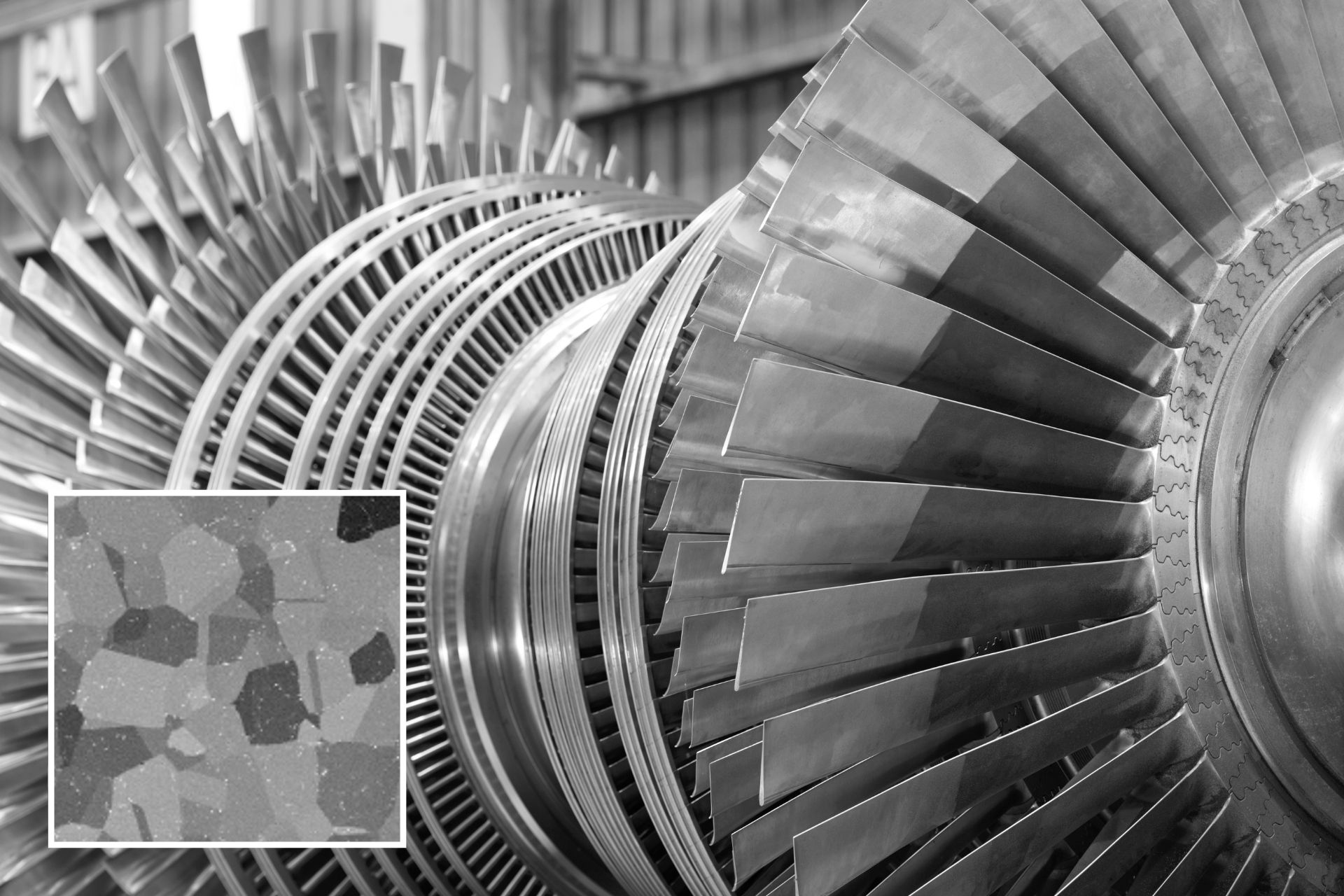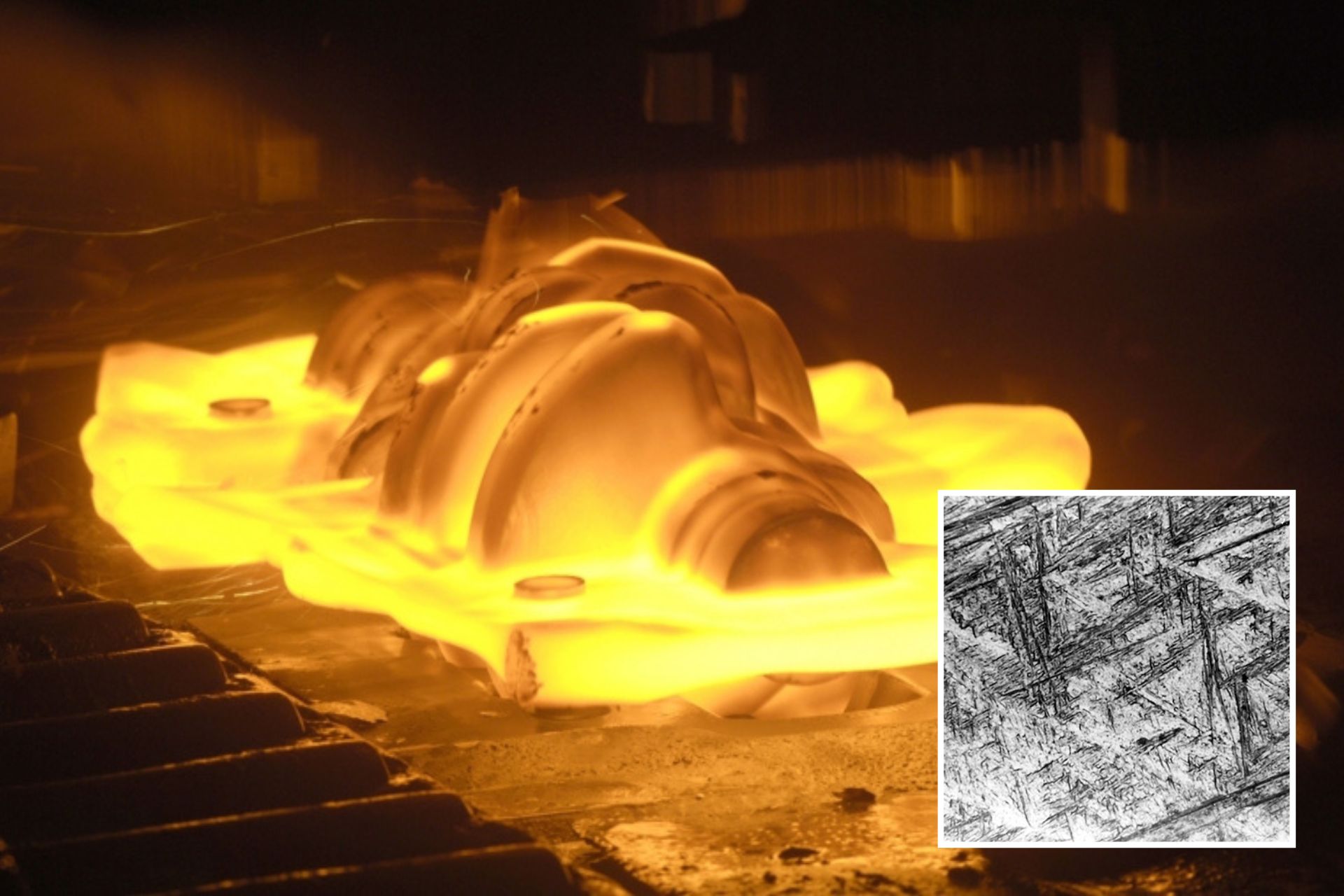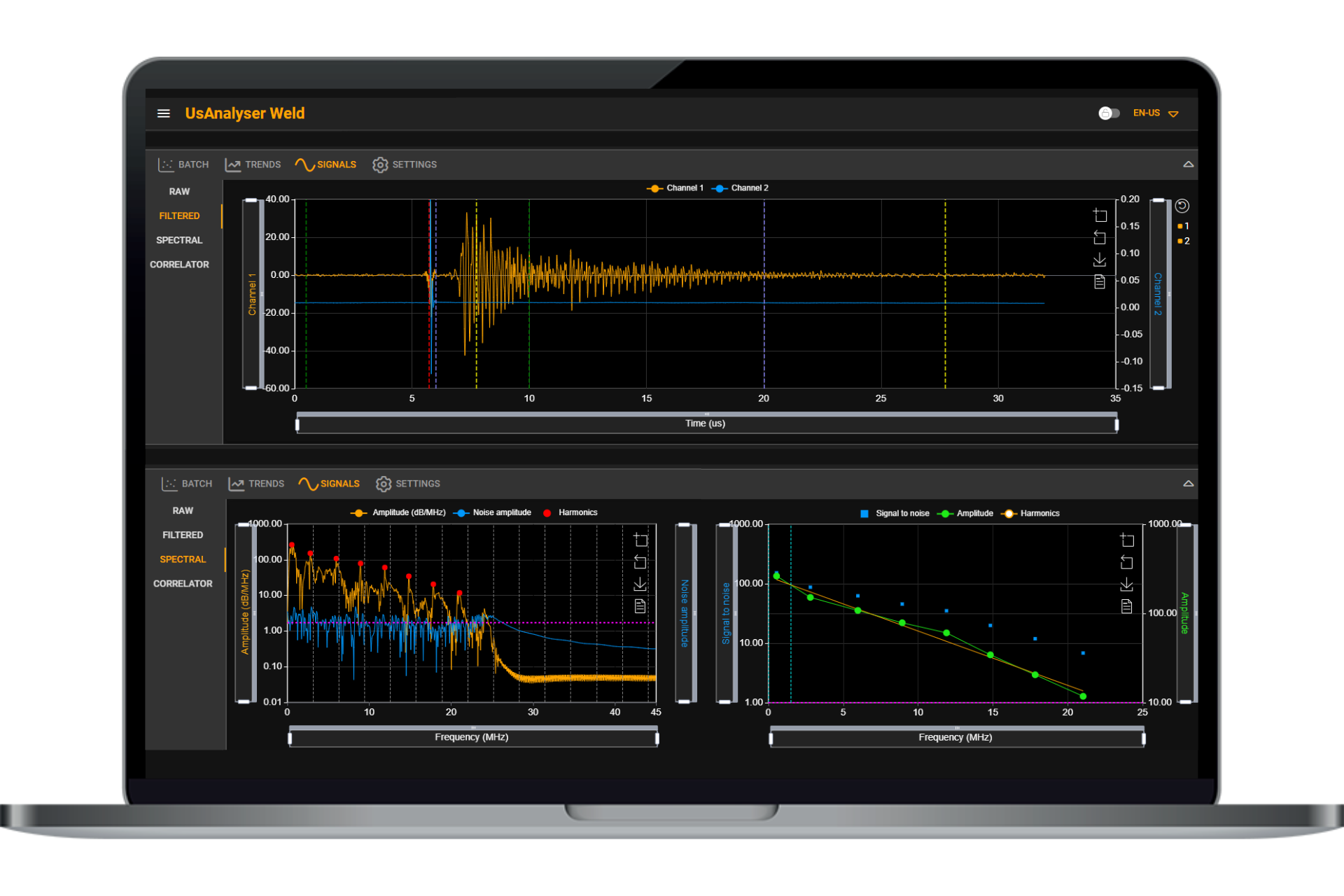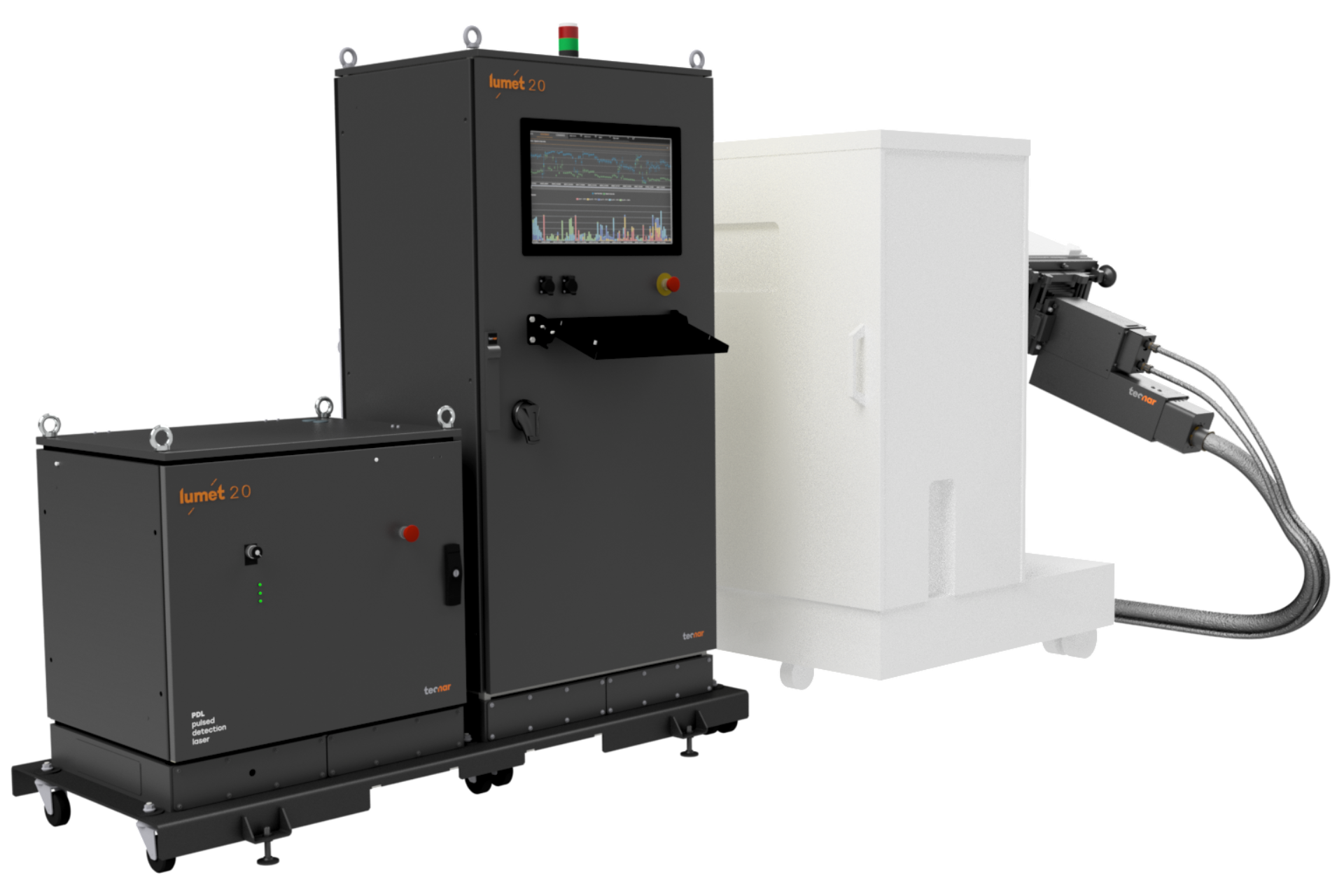Lumet 2.0
A dynamic microstructure analytical tool for metals
Get faster and easier insight into metal microstructure evolution under thermo-mechanical stimulation
Talk to an expertNon-contact ultrasonics for metal microstructure analysis
Despite what you think, fast, easy metallurgical investigation is possible. With Lumet 2.0, users can work beyond the uncertainties and time-consuming manual operations of standard metallographic methods. With its high-data acquisition rate, the Lumet generates hundreds of hours of manual information in just a few minutes
The Lumet 2.0 is a stand-alone non-contact laser-ultrasonic unit designed for easy coupling to a broad range of test machines, such as thermo-mechanical simulators, to analyze and study metals such as steel, aluminum, nickel, titanium alloys and more.
Steel
Real-time viewing of steel recrystallization
Steel producers are looking for new ways to get tighter tolerance on their product properties. Controlled rolling of steel is used to produce desired grain sizes to meet these targets. The Lumet 2.0, coupled with a thermo-mechanical simulator, is an offline platform for in-situ and real-time observation of austenite grain kinetics under plastic deformation and temperature cycles.
This system gives producers the tools to validate current rolling schedules on different steel alloys. It also empowers researchers to develop new thermo-mechanical processing sequences for new types of steel with novel properties. Once established offline, these new sequences can be tested online. With prior knowledge of the off-line data, full-scale plant trial time can be shortened, reducing their cost.
Improved quality of steel coils during continuous annealing
Continuous annealing lines are subject to variations from optimal process conditions. The introduction of new-generation steels to the market makes it important to better understand the process and determine the best annealing times and temperatures.
The Lumet 2.0 helps operators understand the impact of off-optimal conditions by providing real-time microstructure information about grain size dynamics. For example, it may be used to simulate the effect of line slow-down on coil properties, giving the production team more autonomy to cope with variations in line speed or furnace temperature. Better understanding translates into efficient qualified coil production and less scrap volume.
Aluminum
Real-time monitoring of aluminum alloy recrystallization
Cold rolling involves applying high levels of deformation to the aluminum, distorting the existing grains. Recrystallization occurs when the aluminum is annealed at elevated temperatures, so the distorted grains can be replaced by new, more regular grains. A uniform, fine-grain structure leads to improved mechanical properties, while a coarse or uneven grain structure results in reduced properties.
Since the recrystallization level affects the ultrasound speed, the Lumet 2.0, using non-contact laser-ultrasonics, mean the recrystallization process can be viewed in real time. It provides a continuous stream of data compared to the time-consuming method of interrupting the process, quenching the sample and doing a manual metallographic examination. The higher-temperature-resolution data curve provided by Lumet 2.0 reveals details that could be missed by standard metallurgical methods. Understanding the recrystallization process helps aluminum coil manufacturers to optimize the cold rolling process and to minimize the amount of energy required to achieve desired grain structures.
High-value alloys
Improved homogeneity prior to hot-forging nickel based superalloys
Nickel-based superalloys are materials with excellent mechanical strength, high resistance to thermal creep and good corrosion protection. The hot-forging process is a crucial step to confirming these qualities. The forging must be initiated in materials with homogeneous grain size, achieved through heat treatment.
The Lumet 2.0, coupled to a thermo-mechanical simulator, is used to replicate and observe the effect of this heat treatment in real time. This way, operators can test different heat processes and view their impact on grain dynamics. They can then fine-tune the sequence to reach the desired homogeneous grain structure. This information determines production parameters, optimizing the time sequence and reducing scrap volume by ensuring the best material properties prior to forging. And, ultimately, increasing productivity.
Better aging of titanium alloys
Titanium and titanium alloys are important materials in the aerospace, biomedical, energy and marine industries for their high strength-to-density ratio, corrosion resistance and biocompatibility. Such alloys can be heat treated to achieve specific microstructures, influencing their mechanical properties.
The Lumet 2.0, when used in conjunction with a thermo-mechanical simulator, has been shown to be a valuable tool for the evaluation of the alpha-to-beta phase transformation in titanium alloy. This data makes it possible to optimize the aging process of titanium microstructure and tailor the mechanical properties and in-service performance of such material and alloys.
Lumet 2.0
The Lumet 2.0 is based on the National Research Council of Canada patented method – US 7,353,709. Operators evaluate the microstructure of the tested metal using proprietary laser-ultrasonics data signal processing tools. The information provides a better understanding of metal dynamics that can make the transition to industry. For example, to optimize the hot rolling sequence of a new steel alloy.
Software
The LuMetalTools, provided with the Lumet 2.0, is a Tecnar software package that enables operators to easily extract microstructure information from the laser-ultrasonic data. The package includes a set of modules, such as a material properties database, pre-established calibration curves, data importer from external sensors, laser-ultrasonic experiment set-up, signal processing and reporting. All together, this software tool allows operators to efficiently plot microstructure characteristics as a function of an external parameter, such as grain size as a function of temperature. From start to finish, the LuMetalTools empowers researchers to use laser-ultrasonics without being experts in the field.
Hardware
The Lumet 2.0 is a turnkey stand-alone non-contact laser-ultrasonic system designed for easy coupling to different types of simulators, such as a thermo-mechanical simulator, for metallurgical analysis.
The Lumet 2.0 uses Tecnar’s proprietary laser-ultrasonic technologies, such as:
- PDL: a high-powered frequency stabilized long-pulse laser specifically designed for non-contact detection of ultrasonics
- TWM: a laser-ultrasonic receiver based on two-wave mixing in a photo-refractive crystal
- Durabeam technology: a design approach to isolate all optical components from their environment while maintaining serviceability
For each type of simulator, a customized hardware interface is designed and manufactured so that the unit can be operated in a laser-safe environment.
Lumet 2.0 standard components
Laser UT receiver
TWM – Two Wave Mixing photo-refractive receiver
Ultrasonic output bandwidth: 1.0 to 40 MHz
Balanced dual detection for enhanced signal to noise
Input light-monitoring detector
Detection laser
PDL – Pulsed Detection Laser
Firing rate up to 100 Hz
Peak power > 500 W
Pulse width > 80 µs
Optical wavelength: 1064 nm
Beam delivery via optical fibres
Industrial-grade IP54 enclosure
Optical probe
HEPg – Lumet option
Usies Tecnar Durabeam™ technology
Optics optimized for 1064 nm wavelength
Industrial grade enclosure IP65
Generation laser head enclosure included
Test system interface panel included
Generation laser
Short pulse green laser
Nd:YAG Q-switch solid state laser
Optical wavelength 532 nm
Nominal pulse width < 10 nsec
Nominal power output > 50 mJ at 50 Hz
Laser head mounted in HEPg
Software and digitizer
Integrated data acquisition, data processing and controlled computer
Industrial-grade PC with Windows™ operating system
Digitizer with sampling rate of 125 Msamples/sec., 14-bit ADC and 60 MHz bandwidth
Software modules for laser control, data acquisition and data processing
Interested in getting faster, easier insight into metal microstructure evolution?
Leave your details so our experts can contact you. Our team will answer all your questions and suggest the best solution for your needs.






